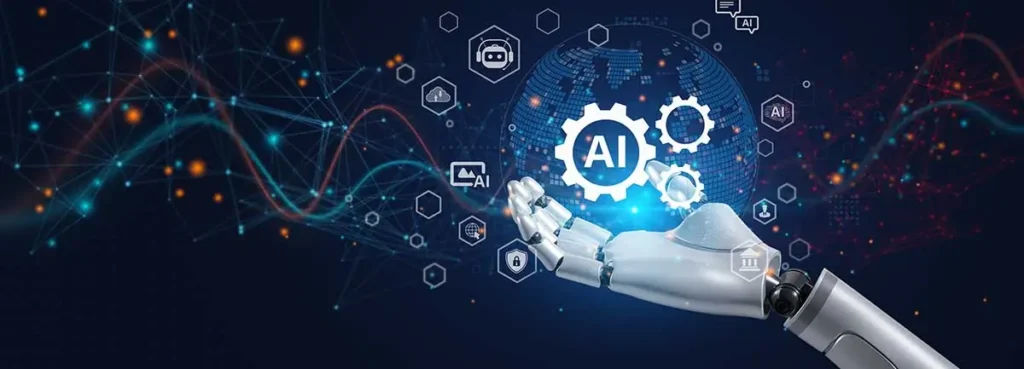Let’s tackle the elephant in the room…
AI has been a huge topic recently. My industry has been awash with claims that ‘AI is taking over’; strangely, there are lots of people out there who truly believe that designers will soon be out of their jobs because of how sophisticated new tools like DALL-E-2 and Midjourney have become.
I agree that AI has changed the playing field and made my profession a lot more accessible for people who didn’t necessarily have specific design skills beforehand.
But it’s far from a replacement for actual designers.
AI may streamline part of the design process, and provide new ideas for us to work from, but machines simply cannot replicate the emotional, cultural, and social context that ‘human’ designers can bring to their work.
Why you still need a real-life designer…
Here are three reasons why you should be wary of using AI to replace human design skills:
1. AI only works with inputted data
AI can take direction from a series of prompts, but it’s not a creative source. It can only function based on the information it receives. By nature, it’s been developed to think inside the box, not outside of it – while the role of a professional designer is to find new solutions to common problems. If you’re searching for the latter – which, let’s face it, most of us are – AI falls short at the first hurdle.
2. AI has ZERO soft skills
AI is intelligent, but it’s not human. You need to work with a designer who has an understanding of your market; an empathy for what you’re going through, and what your customers are experiencing themselves; and an inventive way of thinking that’s based on many years’ experience in helping companies like yours stand out from the crowd.
3. AI designs won’t keep you competitive
When you’re battling intense competition from rival firms and trying to navigate an economy that’s unpredictable (at best!), you, as a business owner, should be valuing originality more than ever. I very much doubt that you will get the unique results you need from a bot. You need someone on board who can establish a connection with your audience through the tried-and-tested power of design – and, better still, be able to clearly communicate their reasons and justify their design decisions to you and the rest of your organisation, which is sometimes just as important as coming up with the visuals.
My take? Technology should be embraced, not feared.
I’m a big advocate of this train of thought, because throughout my 30-year career, I’ve seen first-hand just how much technology has changed design for the better.
When I was at design college back in the early 90s, computers were rare. We had a bit of help from software like Freehand (remember that?!), but much of my work had to be carried out by hand. It was a labour of love – but labour, nonetheless. Then, digital took over, and it’s been a never-ending learning curve ever since.
These days, I’m glued to my iMac, and I don’t know where I’d be without tools like Adobe Creative Suite, Slack, or Trello. They free up time and space; they help me focus on creating, not producing. They help me achieve my best work faster, which brings tonnes of benefits for my clients, too.
So, I’m not scared of anything new. I enjoy researching the next best thing, because I never want to sit still within my business. Like most designers, I will definitely be experimenting with AI, not shying away from it. I just won’t expect it to replicate my experience or replace my expertise.
What about ChatGPT?
The writers and content creators in my wider team will be embracing AI to a degree, but using it to complement their work, not do their job for them. There is a place for software like ChatGPT, which can generate reams of text with just a couple of pointers. Again, it’s a great starting point for projects, and can help collect information and organise ideas (a bit like Google, in a way). It’s particularly useful for developing informational social media posts, for example. But what it delivers will never have the same warmth, personality, or emotional draw as the copy that we, as humans, can produce – and ultimately, I know that my clients want to invest in written assets that will help them connect and engage with their target customers.
We can also never be sure whether the information generated by tools like ChatGPT is 100% accurate, either. It can learn quickly, but this kind of AI doesn’t have an in-built fact-checker. If you’re planning to copy and paste text straight from the machine into your landing page, blog, e-book, or brochure, you may find yourself red-faced when a customer or peer eventually calls you out on something that’s factually inaccurate.
So, there you have it: my take on why AI will not be replacing real-life designers any time soon, and why bespoke, human-crafted designs are still an essential investment for you business in 2023 (and likely beyond).
